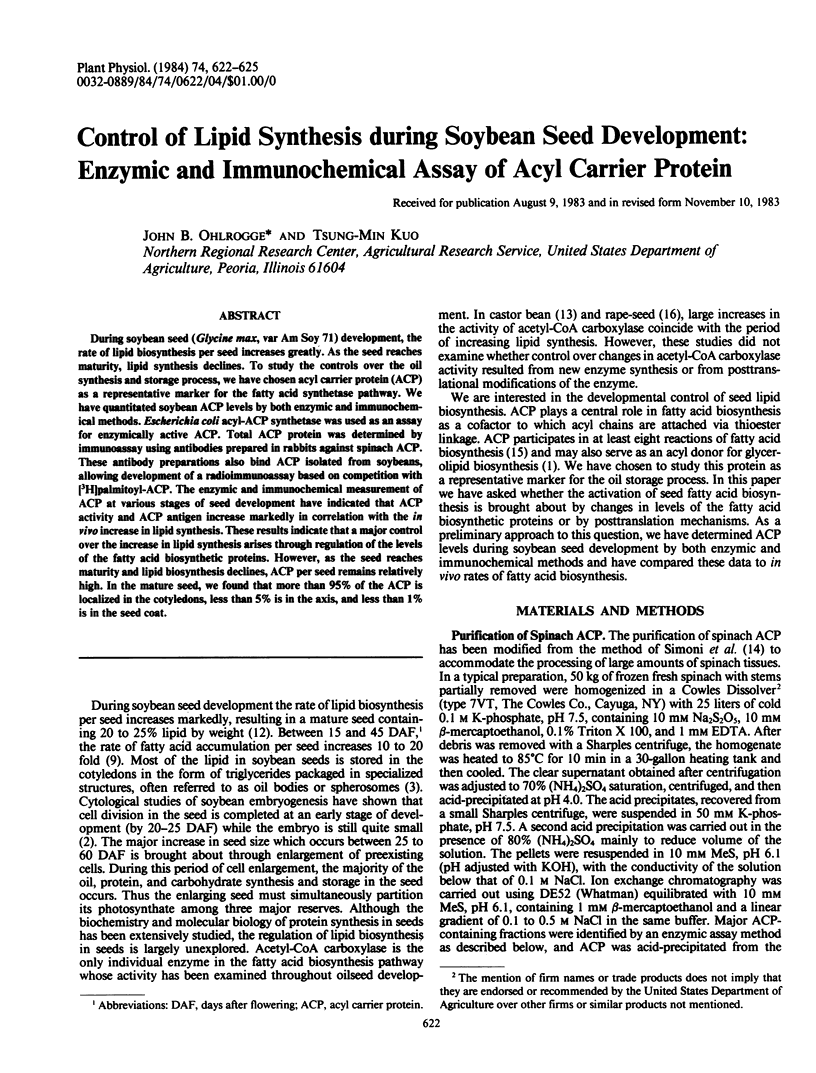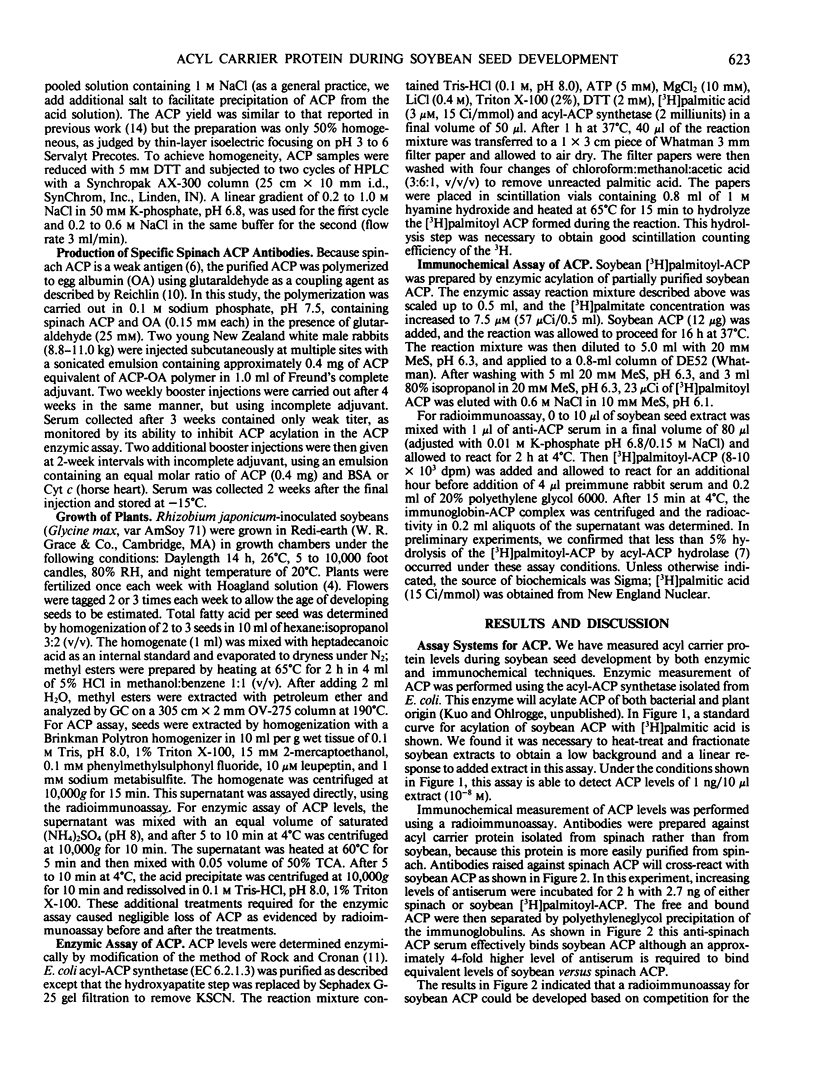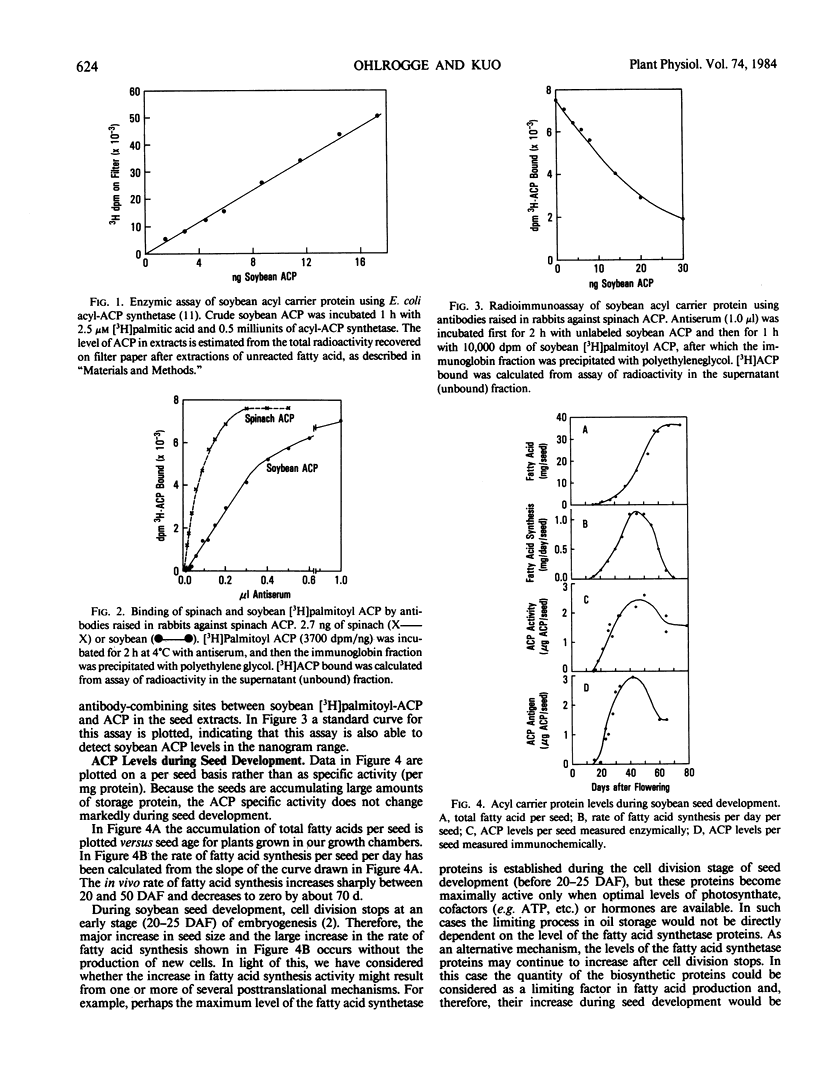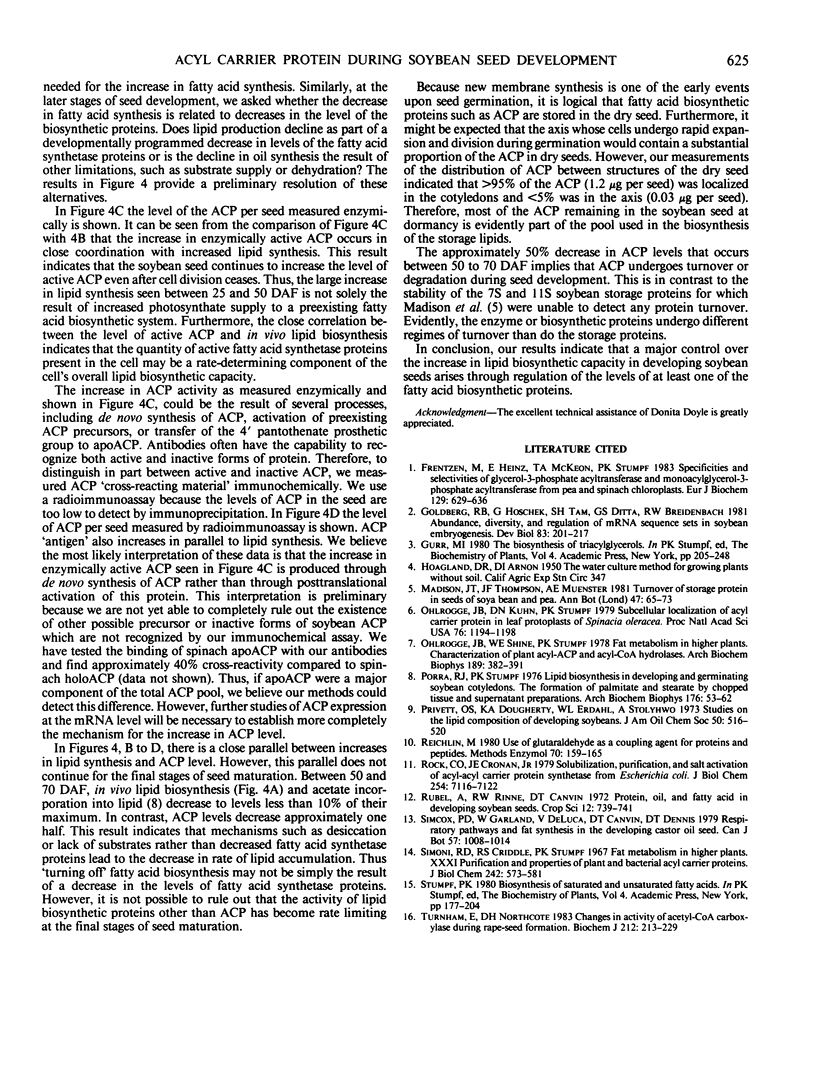Abstract
During soybean seed (Glycine max, var Am Soy 71) development, the rate of lipid biosynthesis per seed increases greatly. As the seed reaches maturity, lipid synthesis declines. To study the controls over the oil synthesis and storage process, we have chosen acyl carrier protein (ACP) as a representative marker for the fatty acid synthetase pathway. We have quantitated soybean ACP levels by both enzymic and immunochemical methods. Escherichia coli acyl-ACP synthetase was used as an assay for enzymically active ACP. Total ACP protein was determined by immunoassay using antibodies prepared in rabbits against spinach ACP. These antibody preparations also bind ACP isolated from soybeans, allowing development of a radioimmunoassay based on competition with [3H]palmitoyl-ACP. The enzymic and immunochemical measurement of ACP at various stages of seed development have indicated that ACP activity and ACP antigen increase markedly in correlation with the in vivo increase in lipid synthesis. These results indicate that a major control over the increase in lipid synthesis arises through regulation of the levels of the fatty acid biosynthetic proteins. However, as the seed reaches maturity and lipid biosynthesis declines, ACP per seed remains relatively high. In the mature seed, we found that more than 95% of the ACP is localized in the cotyledons, less than 5% is in the axis, and less than 1% is in the seed coat.
Full text
PDF



Selected References
These references are in PubMed. This may not be the complete list of references from this article.
- Frentzen M., Heinz E., McKeon T. A., Stumpf P. K. Specificities and selectivities of glycerol-3-phosphate acyltransferase and monoacylglycerol-3-phosphate acyltransferase from pea and spinach chloroplasts. Eur J Biochem. 1983 Jan 1;129(3):629–636. doi: 10.1111/j.1432-1033.1983.tb07096.x. [DOI] [PubMed] [Google Scholar]
- Goldberg R. B., Hoschek G., Tam S. H., Ditta G. S., Breidenbach R. W. Abundance, diversity, and regulation of mRNA sequence sets in soybean embryogenesis. Dev Biol. 1981 Apr 30;83(2):201–217. doi: 10.1016/0012-1606(81)90467-x. [DOI] [PubMed] [Google Scholar]
- Ohlrogge J. B., Kuhn D. N., Stumpf P. K. Subcellular localization of acyl carrier protein in leaf protoplasts of Spinacia oleracea. Proc Natl Acad Sci U S A. 1979 Mar;76(3):1194–1198. doi: 10.1073/pnas.76.3.1194. [DOI] [PMC free article] [PubMed] [Google Scholar]
- Ohlrogge J. B., Shine W. E., Stumpf P. K. Fat metabolism in higher plants. Characterization of plant acyl-ACP and acyl-CoA hydrolases. Arch Biochem Biophys. 1978 Aug;189(2):382–391. doi: 10.1016/0003-9861(78)90225-4. [DOI] [PubMed] [Google Scholar]
- Porra R. J., Stumpf P. K. Lipid biosynthesis in developing and germinating soybean cotyledons. The formation of palmitate and stearate by chopped tissue and supernatant preparations. Arch Biochem Biophys. 1976 Sep;176(1):53–62. doi: 10.1016/0003-9861(76)90140-5. [DOI] [PubMed] [Google Scholar]
- Privett O. S., Dougherty K. A., Erdahl W. L., Stolyhwo A. Studies on the lipid composition of developing soybeans. J Am Oil Chem Soc. 1973 Dec;50(12):516–520. doi: 10.1007/BF02640523. [DOI] [PubMed] [Google Scholar]
- Reichlin M. Use of glutaraldehyde as a coupling agent for proteins and peptides. Methods Enzymol. 1980;70(A):159–165. doi: 10.1016/s0076-6879(80)70047-2. [DOI] [PubMed] [Google Scholar]
- Rock C. O., Cronan J. E., Jr Solubilization, purification, and salt activation of acyl-acyl carrier protein synthetase from Escherichia coli. J Biol Chem. 1979 Aug 10;254(15):7116–7122. [PubMed] [Google Scholar]
- Simoni R. D., Criddle R. S., Stumpf P. K. Fat metabolism in higher plants. XXXI. Purification and properties of plant and bacterial acyl carrier proteins. J Biol Chem. 1967 Feb 25;242(4):573–581. [PubMed] [Google Scholar]
- Turnham E., Northcote D. H. Changes in the activity of acetyl-CoA carboxylase during rape-seed formation. Biochem J. 1983 Apr 15;212(1):223–229. doi: 10.1042/bj2120223. [DOI] [PMC free article] [PubMed] [Google Scholar]


